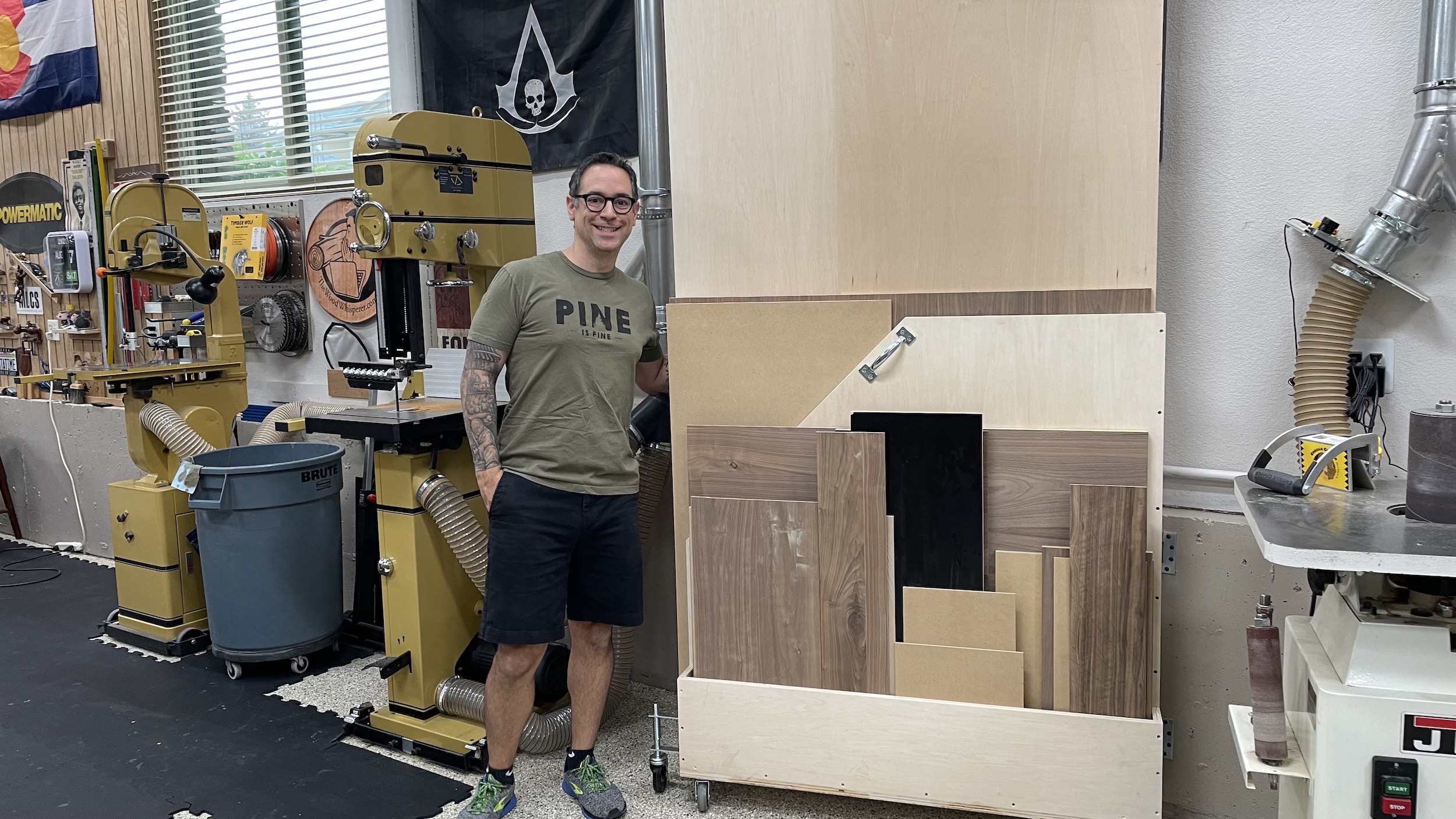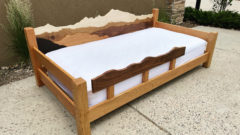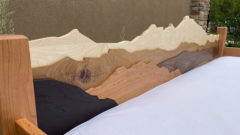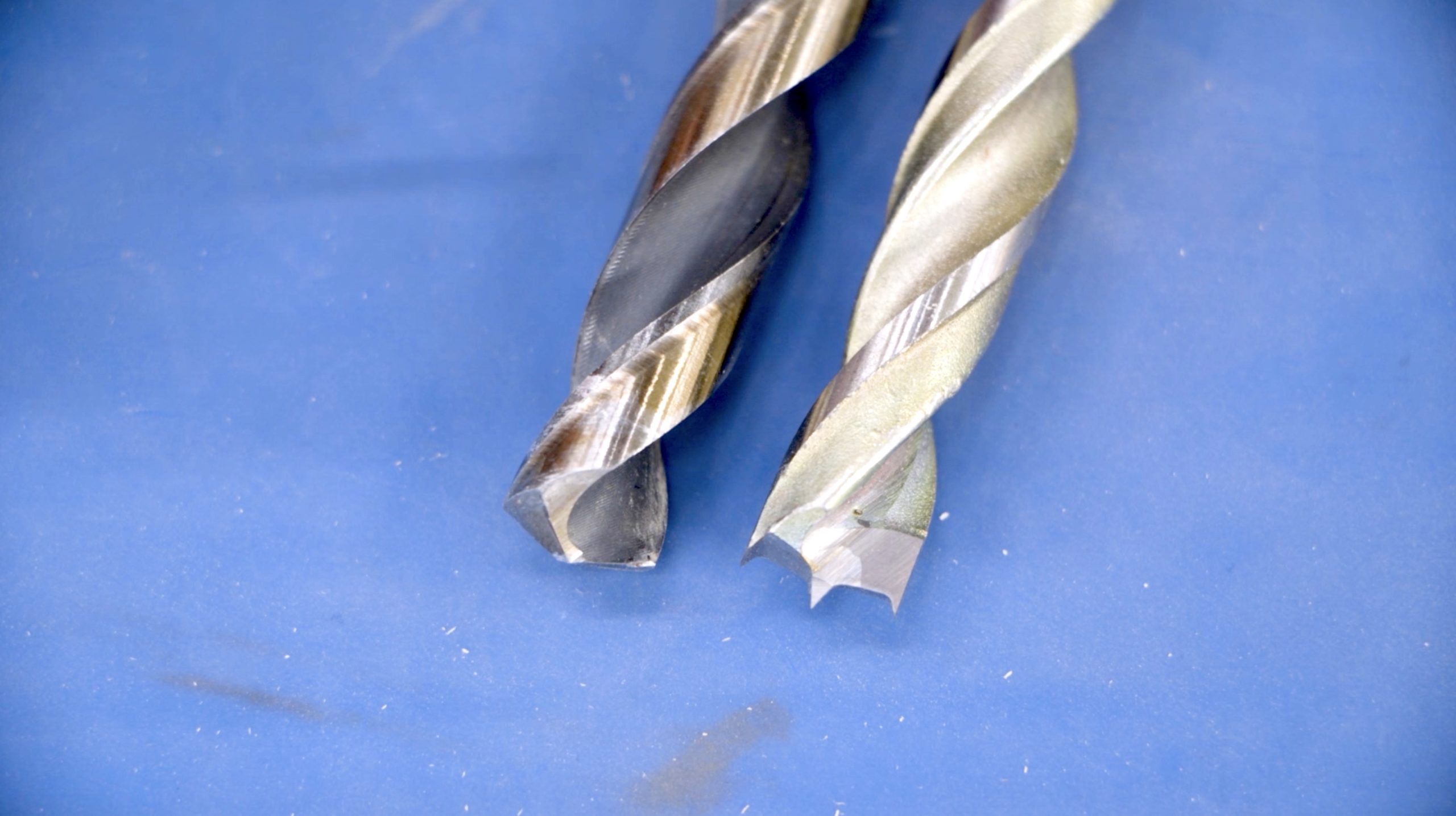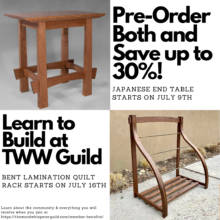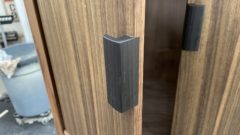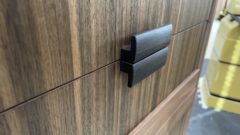Today I’m going to try to help you make a decision between the Festool ETS EC150 and the Mirka Deros. The Mirka costs over $125 more and the Festool is already a top of the line sander. So is the Mirka worth it? Let’s see if we can answer that question.
Disclaimer – I’ve been using a Festool sander for over 10 years now, which will result in some unavoidable bias. I did my best to remove that bias by using the Mirka exclusively for three months before doing this review. I also purchased both of these sanders with my own money and have no personal skin in the game. Finally, everything contained within this video is my opinion.
Specifications
The specific sanders I used for this comparison are both 6″ diameter and both feature a 5mm orbit pattern.
|
Festool ETS EC150 |
Mirka 650X CV |
| Price |
$525 |
$650 |
| Osciallation Options |
3 & 5 mm |
2 & 5 mm |
| RPM |
4k-10k |
5k-10k |
| Power Switch |
Standard Button |
Master Power Button with Paddle |
| Variable Speed |
Dial |
Buttons and Paddle |
| Weight |
2.74 lbs |
2.29 lbs |
| Height |
4 7/16″ |
3 13/16″ |
| Hose Compatibility |
Works with Festool |
Works with Festool |
| Plug Style |
Proprietary Twist Lock |
Proprietary Snap-in |
| Pad Hole Pattern |
Ridiculous |
Ridiculous |
| Warranty |
3 Yr/No Wear & Tear |
3 Yr Incl. Wear & Tear |
Opinionated Analysis
Ergonomics/Conveniences
The Mirka is a form factor some of you might recognize. This type of paddle sander is something often found in pneumatic tools. Anyone coming to woodworking from the autobody world will likely prefer this sander over the Festool. The Mirka has a lower center of gravity and tends to feel like a more natural extension of the hand. The Festool is ergonomic too but I’d say the Mirka has a slight advantage here. Between the ergonomics and the slightly lighter weight, the Mirka would be an obvious choice for anyone working on vertical surfaces or ceilings. That kind of work is few and far between for me as most sanding I do is flat and horizontal. So that feature isn’t quite as important to me as it might be to someone else.
Now you might think this makes the Mirka the undisputed champ with regard to ergonomics but there’s a catch: the paddle. I’m honestly not a fan. In order for the sander to run, the paddle has to be depressed the whole time. Let off and the sander stops. The fact that the paddle acts like a variable speed control of sorts is totally lost on me. It’s like a gas paddle that is either at 0 or 60 mph since it’s really difficult to keep the paddle halfway pressed down. And for the work I do, on the fly speed adjustments are unnecessary. I much prefer a dedicated on/off button that stays on until I hit it again. And I nearly always run my sanders at full speed anyway. A lot of folks have no problem keeping their hand on the paddle but for me, during long sanding sessions, I like to change up my grip to help reduce fatigue and cramping and that’s a lot harder to do when you have to keep your hand on a paddle.
This paddle also creates a little bit of a liability as you can, and will, likely place the sander upside down at some point to change the paper. If the power is still on, the sander will spin and give you a little surprise at the least and a sandpaper cut at the worst. You have to be sure to turn off the master power before flipping the sander over. You may also set the sander down and accidentally wind up pressing the paddle only to watch the sander go for a little walk.
Speaking of changing paper, the pad on the Mirka spins freely. While not a huge deal, this does make it slightly more frustrating to change the paper. The Festool doesn’t spin as easily so it makes it a lot easier to line up the goofy-ass hole patterns.
Performance
Both sanders do a great job and I could not discern a difference in the resulting surface quality between these two. I specifically used the same sandpaper I’ve been using for years so that if there were any differences I’d be able to spot them. You might notice that my paper has the old standard hole pattern and doesn’t even make use of the goofy hole patterns both of these sanders use. Even still, both of them have absolutely adequate dust collection.
How about sanding speed? One of the things I hear a lot about Mirka converts is that the Mirka removes stock noticeably faster. Unfortunately, I didn’t see any evidence of that at all. I even ran a couple of tests just to see some side by sides and both sanders took an equal number of passes to remove the pencil lines I placed on the surface. And after using it for 3 months I can’t say I noticed any practical difference in sanding speed and efficiency. And just as a second data point, I talked with my assistant Jon about this and he agrees that the Mirka is not saving us any time.
Now one interesting thing I noticed while sanding a cedar bench top. The Western Red Cedar is really soft wood but it does have dense knot areas periodically. For whatever reason, the Mirka tended to kick and whip a little more when it made contact with those dense areas. The Festool just seemed to be more stable with fewer jerks and kicks. This was the only time I observed that sort of behavior, as with any other sanding job the Mirka was just as stable as the Festool.
Both sanders are low vibration and both are a huge step up from home store brands, but between the two the amount of vibration feels pretty much the same.
Accessories
Both companies offer a variety of pad options, a dust extractor, and sandpaper. Mirka has the advantage in sandpaper just by the shear volume of options. That said, good luck making sense of them. The Mirka sandpaper page reminds me of the Cheesecake Factory menu. I can’t figure out what I want so I just get the cheesecake. This is further exacerbated by goofy non-descriptive names like Abralon, Jepuflex, and Mirlon….which all sound like wizards from Lord of the Rings. Festool has a smaller/simpler selection of abrasives but they also feature goofy names like, Granat and Rubin.
One area Festool holds a huge advantage is the number of other tools they produce. There are obvious advantages to having a bunch of tools from the same brand and if you go Mirka you’re pretty much limited to sanders and polishers. If you go Festool you have access to things like saws, routers, planers, drills and of course that Domino thing. So that’s something to keep in mind depending on what you want to do with future purchases. Now if you already have a Festool vac and maybe even a boom arm like I have here, you can pretty easily include the Mirka sander in that setup just by running the Mirka cord alongside the Festool. Not that big of a deal.
Who Should Buy the Mirka Deros?
- People who have a history with pneumatic sanders. If you’re used to that paddle style sander, you’ll be right at home with the Deros.
- People who tend to do a lot of vertical or overhead work. Though I’m not a fan of the paddle, the lighter weight will be a benefit in the long run.
- Gadget geeks: Mirka has an app. Not sure how useful the info is but apparently you can track speed data as well as vibration exposure. I have a watch that reminds me to breathe…..so why not.
- People who have an anger boner against Festool. Let’s face it. Some people would love to spend $125 more just to stick it to those Festool-lovers.
Who Should Buy the Festool ETS EC?
- People who like the idea of a system approach and plan to add more tools to their arsenal. Festool definitely gives you a more cohesive experience with various tool offerings.
- People who do mostly shop-based flat sanding. If you’re not going vertical, the lighter weight of the Mirka is somewhat irrelevant. And while the Mirka has the lower center of gravity, remember I did experience that jumping when sanding a board that had a lot of knots in it, and the Festool seemed to navigate those areas with more grace. Perhaps the weight plays a role in that.
- People who want to save $125.
Conclusion
I think the real sticking point here is the $125 difference (in the US). My goal was to determine if the Mirka is better than the Festool and if it is better, is it $125 better? Without a doubt I have to say “No.” These sanders are much more alike than they are different and the differences come down to really nit-picky pros and cons. So if one of the pros or cons I mentioned previously is a real concern for you, that might help you make a decision. But for most woodworkers, I have to say they’d have trouble justifying the additional expense of the Mirka. Festool is already considered one of the best (and most expensive) sanders on the market. So if the Mirka comes in $125 MORE than the Festool, I need to see a good compelling reason for it and I don’t.
Now if you’ve used both sanders and walked away with a different impression, let us know about it in the comments. I’m just one person with one opinion and there are a lot of variables at play here. My personal experience doesn’t invalidate yours in any way, but if you disagree with me you’re wrong (wink wink).
The post Mirka Deros VS Festool ETS EC | Which Sander Should You Buy? appeared first on The Wood Whisperer.
from The Wood Whisperer https://ift.tt/3ciCXwn
via
IFTTT






